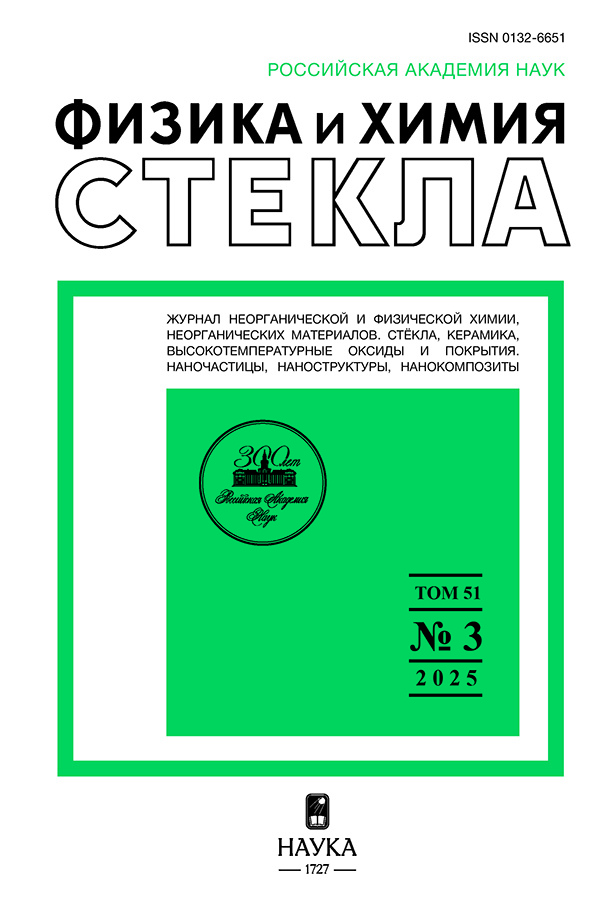Кластерная самоорганизация интерметаллических систем: кластеры-прекурсоры k3, k4, k6 для самосборки кристаллических структур Y8Rh12Sn20-oS40, Lu16Zn20Ge24-oS60, Ba8Ir16In52-oS76
- Авторы: Шевченко В.Я.1, Илюшин Г.Д.2
-
Учреждения:
- Филиал НИЦ “Курчатовский институт” – ПИЯФ–ИХС
- Курчатовский комплекс кристаллографии и фотоники НИЦ “Курчатовский институт”
- Выпуск: Том 51, № 1 (2025)
- Страницы: 5-20
- Раздел: Статьи
- URL: https://kazanmedjournal.ru/0132-6651/article/view/684307
- DOI: https://doi.org/10.31857/S0132665125010012
- EDN: https://elibrary.ru/DZXOIX
- ID: 684307
Цитировать
Полный текст
Аннотация
С помощью компьютерных методов (пакет программ ToposPro) осуществлены комбинаторно-топологический анализ и моделирование самосборки кристаллических структур Y8Rh12Sn20-oS40 (a = 4.387 Å, b = 26.212 Å, c = 7.155Å, V = 822.77 Å3), Lu16Zn20Ge24-oS60 (a = 4.179 Å, b = 18.368 Å, c = 15.050 Å, V = 1155.24 Å3), Ba8Ir16In52-oS76 (a = 4.485 Å, b = 29.052 Å, c = 13.687 Å, V = 1783.63 Å3) c пространственной группой Cmc21(36). Для Y8Rh12Sn20-oS40 установлены 18 вариантов выделения кластерных структур с числом кластеров N = 1 (1 вариант), N = 2 (11 вариантов), N = 3 (6 вариантов). Рассматривается вариант самосборки кристаллической структуры с участием образующих упаковки кластеров-прекурсоров в виде сдвоенных тетраэдров K6 = 0@6(YSn3Rh2) и тетраэдров K4 = 0@4(YSn2Rh). Для Lu16Zn20Ge24-oS60 установлены 66 вариантов выделения кластерных структур с числом кластеров N = 1 (1вариант), N = 2 (25 вариантов), N = 3 (20 вариантов) и N = 4 (20 вариантов). Рассматривается вариант самосборки кристаллической структуры с участием образующих упаковки трех атомных кластеров-прекурсоров K3(D1) = 0@3(Lu Ge2), K3(D2) = 0@3(Lu Zn Ge), K3(D3) = 0@3(Lu Zn Ge), K3(D4) = 0@3(Lu Zn Ge), K3(D5) = 0@3(GeZn2). Для Ba8Ir16In52-oS76 установлены 129 вариантов выделения кластерных структур с числом кластеров N = 2 (36 вариантов) и N = 3 (103 варианта). Рассматривается вариант самосборки кристаллической структуры с участием образующих упаковки кластеров-прекурсоров: пентагональных пирамид K6 = 0@6(BaIn5), тетраэдров K4a = 0@4(BaRhIn2) и тетраэдров K4b = 0@4(Rh2In2), колец K3 = 0@4(RhIn2) и атомов-спейсеров In. Реконструирован симметрийный и топологический код процессов самосборки кристаллической структур Y8Rh12Sn20-oS40, Lu16Zn20Ge24-oS60, Ba8Ir16In52-oS76 из кластеров-прекурсоров K3, K4, K6 в виде: первичная цепь → слой → каркас.
Полный текст
Об авторах
В. Я. Шевченко
Филиал НИЦ “Курчатовский институт” – ПИЯФ–ИХС
Автор, ответственный за переписку.
Email: gdilyushin@gmail.com
Россия, Санкт-Петербург
Г. Д. Илюшин
Курчатовский комплекс кристаллографии и фотоники НИЦ “Курчатовский институт”
Email: gdilyushin@gmail.com
Россия, Москва
Список литературы
- Inorganic crystal structure database (ICSD). Fachinformationszentrum Karlsruhe (FIZ), Germany and US National Institute of Standard and Technology (NIST), USA.
- Pearson’s Crystal Data: Crystal Structure Database for Inorganic Compounds. ASM International, Materials Park, Ohio, USA.
- Blatov V.A., Shevchenko A.P., Proserpio D.M. Applied Topological Analysis of Crystal Structures with the Program Package ToposPro // Cryst. Growth Des. 2014. V. 14. № 7. P. 3576–3585. https://topospro.com/
- Wang Jian, Xia Sheng-Qing, Tao Xu-Tang, Schafer Marion C., Bobev Svilen. New ternary phosphides and arsenides. Syntheses, crystal structures, physical properties of Eu2ZnP2, Eu2Zn2P3 and Eu2Cd2As3 // Inorg Chem. 2013. V. 205. P. 116–121.
- Wang Jian, Yang Min, Pan Mingyan, Xia Shengqing, Tao Xutang, He Hua, Darone G., Bobev S. Synthesis, crystal and electronic structures, and properties of the new pnictide semiconductors A2CdPn2 (A = Ca, Sr, Ba, Eu; Pn = P, As, Sb) // Inorg. Chem. 2011. V. 50. P. 8020–8027.
- Xia S., Bobev S. Cation–Anion Interactions as Structure Directing Factors: Structure and Bonding of Ca2CdSb2 and Yb2CdSb2 // Journal of the American Chemical Society. 2007. V. 129. P. 4049–4057.
- Meot Meyer M., Venturini G., Malaman B., Steinmetz J., Roques B. Des nouveaux stannures ternaires de rhodium et d’elements des terres rares: TR2Rh3Sn6 ou TR = Y, Gd, Tb, Dy, Ho. Structures cristallines et magnetiquesdes Y2Rh3Sn5 // Materials Research Bulletin. 1984. V. 19. P. 1181–1186.
- Kranenberg C., Johrendt D., Mewis A. Neue ternaere Germanide: die Verbindungen Ln4Zn5Ge6 (Ln: Gd, Tm, Lu) // Z. Anorg. Allg. Chem. 2001. V. 627. P. 539–544.
- Jang Gyung-Joo, Yun Hoseop. Hafnium germanium telluride // Acta Cryst. 2008. V. E64. i27.
- Lee Changho, Jang Gyung-Joo, Yun Hoseop. Stoichiometric ZrGeTe4. Acta Cryst. 2007. V. E63. i182.
- Zhang F.X., Xu F.F., Mori T., Liu Q.L., & Tanaka T. Novel rare-earth borosilicide RE1–xB12Si3.3-δ (RE = Y, Gd–Lu) (0 ≤ x ≤ 0.5, δ ≈ 0.3): synthesis, crystal growth, structure analysis and properties // Journal of Solid State Chemistry. 2003. V. 170. P. 75–81.
- Zhuraleva M.A., Salvador J., Bilc D., Mahanti S.D., Ireland J., Kannewurf C.R., Kanatzidis M.G. Intermetallics as zintl phases: Yb2Ga4Ge6 and RE3Ga4Ge6 (RE = Yb, Eu): Structural response of a [Ga4Ge6]4 — framework to reduction by two electrons // Chemistry. 2004. V. 10. P. 3197–3208.
- Avzuragova V.A., Nesterenko S.N., Tursina A.I. LaRhAl, La3Rh3Al4, and Ce5Rh5Al6 as a new family of ternary aluminides // Russian Journal of Physical Chemistry. 2017. V. 91(2). P. 252–254.
- Palasyuk A.M., Corbett J.D. Ba IrIn4 and Ba2Ir4In13: Two In-rich polar intermetallic structures with different augmented prismatic environments about the cations. Inorg Chem. 2008. V. 47. № 20. P. 9344–9350.
- Ilyushin G.D. Theory of cluster self-organization of crystal-forming systems. Geometrical-topological modeling of nanocluster precursors with a hierarchical structure // Struct. Chem. 2012. V. 20. P. 975–1043.
- Shevchenko V.Yа., Medrish I.V., Ilyushin G.D., Blatov V.A. From clusters to crystals: Scale chemistry of intermetallics // Structural Chemistry. 2019. V. 30. P. 2015–2027.
- Shevchenko V.Ya., Ilyushin G.D. Cluster Self-Organization of Intermetallic Systems: Clusters-Precursors K3, K4, K6 for the Self-Assembly of RbNa8Ga3As6-aP72, Sr2Ca4In3Ge6-oP56, and Sr8Li4In4Ge8-oP24 Crystal Structures // Glass Physics and Chemistry. 2024. V. 50. P. 87–100.
- Shevchenko V.Ya., Ilyushin G.D. Cluster Self-Organization of Intermetallic Systems: Cluster-Precursors K13, K11, K4, and K3 for the Self-Assembly of Crystal Structures Ce56Ni24Si44-mS124 and Ba10La2Si12-oP48 // Glass Physics and Chemistry. 2024. V. 50. P. 1–9.
- Shevchenko V.Ya., Ilyushin G.D. Cluster Self-Organization of Intermetallic Systems: New Clusters-Precursors K6 and K3 for the Crystal Structures of the Sr12Mg20Ge20-oP52, Sr2LiInGe2-oP24, and Sr2Mg2Ge2-oP12 Family // Glass Phys Chem. 2023. V. 49 (Suppl 1). P. S17–S27.
Дополнительные файлы














